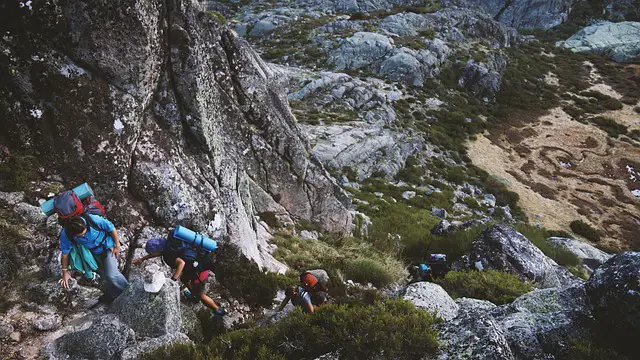If you’ve ever gazed up at a towering peak and wondered what it takes to scale its heights, mountain rope climbing might be the adventure you’re looking for. From the thrill of ascending rugged cliffs to the satisfaction of reaching the summit, mountain rope climbing offers unparalleled excitement and physical challenge. This guide will walk you through the essentials, techniques, and safety measures to ensure a successful climb.
What is Mountain Rope Climbing?
Mountain rope climbing involves scaling up rocky mountain terrains using specialized ropes and climbing gear. Unlike indoor or sport climbing, it often requires acclimatization to high altitudes, navigation through tricky routes, and adapting to unpredictable weather conditions.
Essential Gear for Mountain Rope Climbing
Before you start your adventure, it’s crucial to equip yourself with the right gear. Key items include:
1. **Climbing Rope:** Opt for a dynamic rope that can stretch to absorb a fall’s shock.
2. **Harness:** A good harness ensures safety and comfort.
3. **Helmet:** Protects against falling debris and head injuries.
4. **Carabiners:** Used for securing ropes and creating anchor points.
5. **Belay Device:** Helps in controlling rope tension.
6. **Climbing Shoes:** Provides essential grip and support.
7. **Chalk and Chalk Bag:** Keeps hands dry for better grip.
How to Start Mountain Rope Climbing?
Finding a Mentor
Mountain rope climbing is not a solo adventure for beginners. Finding an experienced climber or a certified guide is essential. They can teach you the ropes, quite literally, and help you learn about knots, belaying techniques, and route planning.
Training and Fitness
Physical fitness is crucial for mountain rope climbing. Flexibility, strength, and endurance can significantly enhance your climbing experience. Focus on exercises that strengthen your core, arms, and legs. Cardiovascular training will also help as altitude climbs can be physically demanding.
Techniques in Mountain Rope Climbing
Belaying
Belaying involves controlling the rope to protect the climber. A belayer must be vigilant and skilled in managing the rope efficiently. Belay devices are used to add friction, making it easier to control the rope.
Anchor Building
Anchors are crucial for safety during climbs. They are fixed points, usually established using bolts, cams, or nuts, to which climbers attach their ropes. Proper knowledge of anchor building can make the difference between a safe climb and a dangerous one.
Lead Climbing
In lead climbing, the climber ascends with the rope, attaching it to protection points along the route. This method requires significant skill and experience since the climber is not secured from above but rather establishes their own safety points.
Safety Measures in Mountain Rope Climbing
Weather Awareness
Weather conditions in mountainous regions can change rapidly. Always check the weather forecast before embarking on your climb. Avoid climbing during storms or when there’s a risk of avalanches.
Communication
Effective communication between climbers is crucial. Develop a set of standard signals or calls to communicate during the climb. This ensures that both the climber and the belayer are in sync, reducing the risk of accidents.
First Aid Knowledge
Being prepared for emergencies is vital. Carry a compact first aid kit and know how to handle common climbing injuries like fractures, sprains, and abrasions.
Embrace the Adventure!
Mountain rope climbing isn’t just about reaching the top; it’s about the journey, the skills you acquire, and the serenity you find in nature. Remember, every mountain climbed is a story of perseverance and triumph. So, gear up, stay safe, and embrace the adventure that awaits you up those towering heights!




